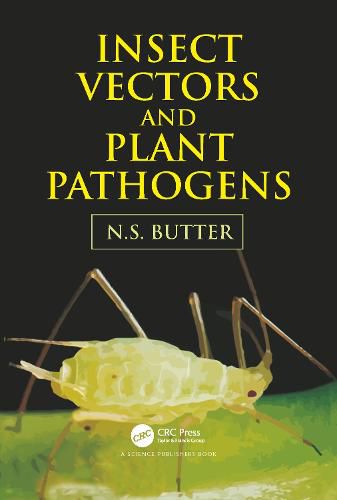Readings Newsletter
Become a Readings Member to make your shopping experience even easier.
Sign in or sign up for free!
You’re not far away from qualifying for FREE standard shipping within Australia
You’ve qualified for FREE standard shipping within Australia
The cart is loading…






The history of pathogens and vectors, unique symptoms of diseases and economic importance of important viral diseases have been dealt with in the introductory chapter of this book. While highlighting the role of arthropods, nematodes, and fungi; other agents of the spread of plant pathogens have also been included. Important aspects of insect vectors with direct bearing on transmission, i.e. vector identification, biology, feeding apparatus, and mechanism of spread including control of pathogens through vectors are covered comprehensively. As aphids and other hemipterous insects are major insect vectors, the book stresses on this order. There is a focus on the transmission of determinants under different categories of the transmission mechanism. The transmission determinant paradigm comprising coat protein and helper component has been expounded with recent cases. A brief description of new diseases at least one from each genus of plant viruses has been included in this compendium to elucidate the interaction of vector and virus. Phytoplasmal etiology of pathogens has been detailed separately on account of their importance. The transmission of plant viruses through insects with biting and chewing type of mouth parts has been discussed in detail as separate chapter. The latest research in the field of mites, nematodes, and fungi as vectors of plant viruses has been included. How the phytotoxemia is different from other crop disorders, has been critically explained with support from suitable and common examples of crop disorders. The book also highlights the effects of plant viruses on their vectors. An account of classification of plant viruses has also been given for better understanding of subject matter. Likewise, the information on the electron microscope along with its use has been included so as to define the procedure of examining sub-microscopic entities. The latest developments in the management of plant pathogens through vector management have been discussed with special reference to the use of biotechnology, crop protection, and plant resistance.
The book will be of value to the teachers and to researchers. It will also be useful for extension workers in managing crop disorders. Students and researchers of entomology, plant pathology, plant protection and virology disciplines will obtain the latest in the field, through this book.
$9.00 standard shipping within Australia
FREE standard shipping within Australia for orders over $100.00
Express & International shipping calculated at checkout
The history of pathogens and vectors, unique symptoms of diseases and economic importance of important viral diseases have been dealt with in the introductory chapter of this book. While highlighting the role of arthropods, nematodes, and fungi; other agents of the spread of plant pathogens have also been included. Important aspects of insect vectors with direct bearing on transmission, i.e. vector identification, biology, feeding apparatus, and mechanism of spread including control of pathogens through vectors are covered comprehensively. As aphids and other hemipterous insects are major insect vectors, the book stresses on this order. There is a focus on the transmission of determinants under different categories of the transmission mechanism. The transmission determinant paradigm comprising coat protein and helper component has been expounded with recent cases. A brief description of new diseases at least one from each genus of plant viruses has been included in this compendium to elucidate the interaction of vector and virus. Phytoplasmal etiology of pathogens has been detailed separately on account of their importance. The transmission of plant viruses through insects with biting and chewing type of mouth parts has been discussed in detail as separate chapter. The latest research in the field of mites, nematodes, and fungi as vectors of plant viruses has been included. How the phytotoxemia is different from other crop disorders, has been critically explained with support from suitable and common examples of crop disorders. The book also highlights the effects of plant viruses on their vectors. An account of classification of plant viruses has also been given for better understanding of subject matter. Likewise, the information on the electron microscope along with its use has been included so as to define the procedure of examining sub-microscopic entities. The latest developments in the management of plant pathogens through vector management have been discussed with special reference to the use of biotechnology, crop protection, and plant resistance.
The book will be of value to the teachers and to researchers. It will also be useful for extension workers in managing crop disorders. Students and researchers of entomology, plant pathology, plant protection and virology disciplines will obtain the latest in the field, through this book.